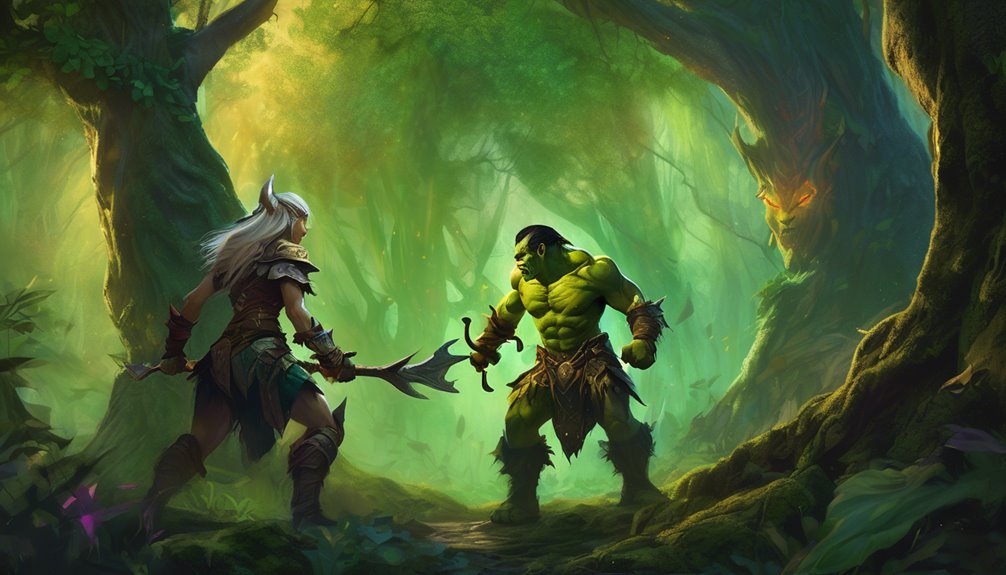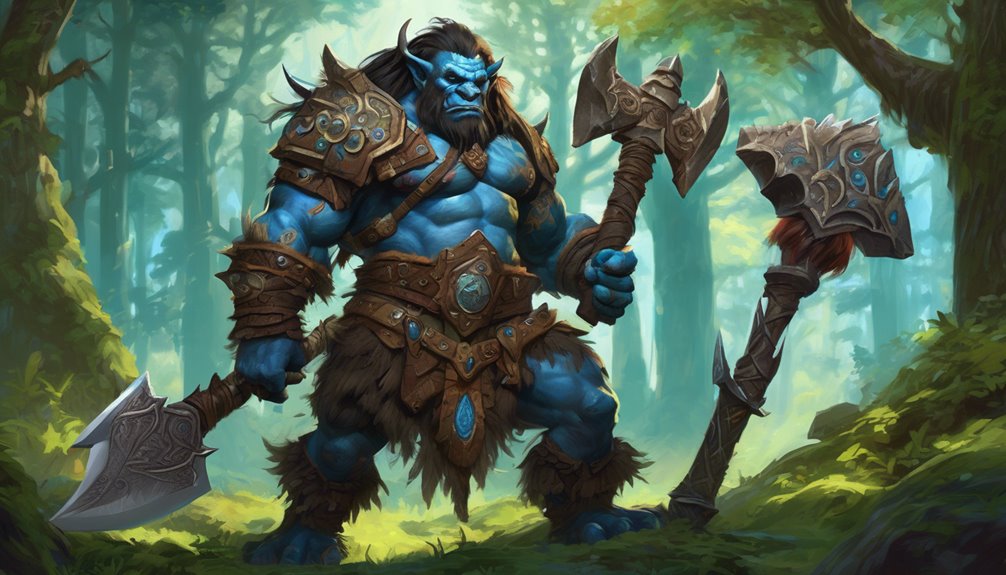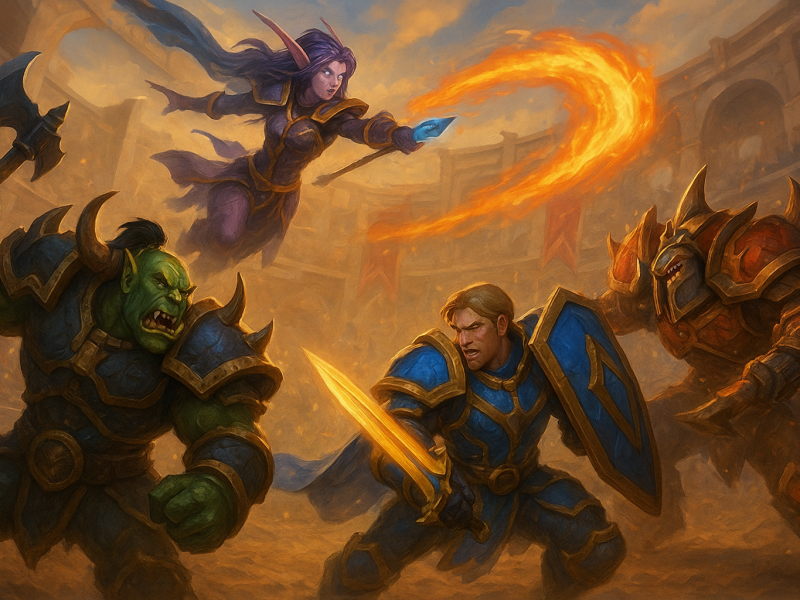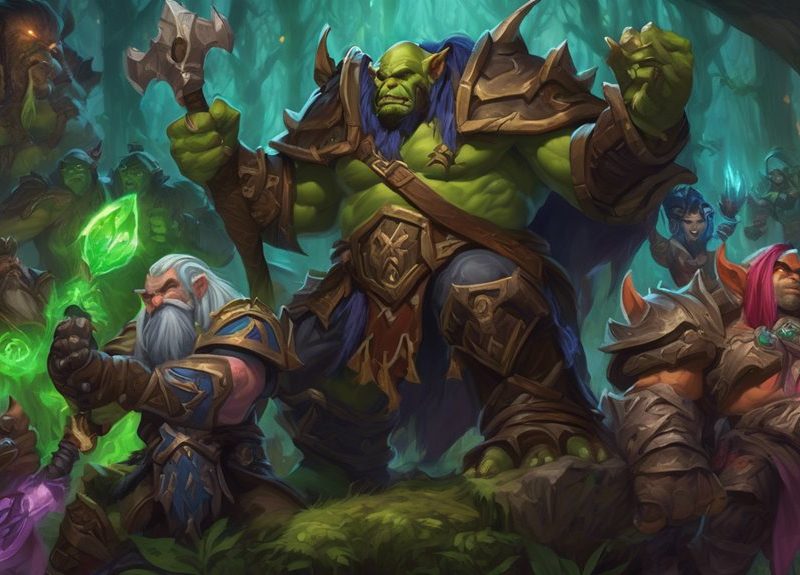Wow Faction Guide: Horde Vs Alliance
The Origins of the Horde
When you delve into the origins of the Horde, you'll uncover a rich tapestry of conflict, survival, and unity that defines its history.
 Emerging from tribal unity among various orc clans, the Horde's inception was a response to oppression and the need for strength in numbers. Key conflicts shaped its evolution, notably the struggle against the Burning Legion, which forced disparate tribes to unite under a common banner. This unity marked a significant shift in Horde history, as the orcs transformed from fractured clans into a formidable force.
Emerging from tribal unity among various orc clans, the Horde's inception was a response to oppression and the need for strength in numbers. Key conflicts shaped its evolution, notably the struggle against the Burning Legion, which forced disparate tribes to unite under a common banner. This unity marked a significant shift in Horde history, as the orcs transformed from fractured clans into a formidable force.
As the warcraft evolution continued, the Horde embraced not just orcs, but other races like trolls and tauren, expanding its diversity and power. The challenges faced during these formative years solidified a sense of identity, enabling the Horde to navigate future adversities. Understanding this complex background is crucial for grasping the dynamics that define the faction today.
The Origins of the Alliance
The Alliance's origins are rooted in a shared commitment to unity against common threats, primarily the relentless aggression of the Horde. Formed during the tumultuous period of the First War, the Alliance brought together several races, including humans, dwarves, and night elves, under the leadership of key figures like King Llane Wrynn and Highlord Tirion Fordring. These founding leaders emphasized cultural values such as honor, loyalty, and cooperation, fostering a sense of identity among diverse factions.
As the Alliance history unfolded, crucial alliances emerged, strengthening their resolve against external dangers. The bonds between races have evolved, reflecting a deep commitment to mutual protection and shared goals. This unity not only served as a defensive measure but also promoted cultural exchange, enriching the identities of its members. The Alliance remains a powerful symbol of resilience, striving to uphold its principles in the face of ongoing challenges.
Key Races of the Horde
When you think of the Horde, two races often come to mind: the formidable Orcs and the enigmatic Undead. Orcs are celebrated for their strength and resilience, embodying the warrior spirit of the Horde, while the Undead wield dark magic, bringing a unique strategic edge to the faction. Understanding these key races helps you appreciate the diverse dynamics within the Horde and their impact on the ongoing conflict with the Alliance.
Orcs: Strength and Resilience
Orcs stand as a pillar of strength and resilience within the Horde, embodying a rich history of perseverance and martial prowess. Their orc culture is steeped in honor, loyalty, and the valor of their ancestors, shaping both their identity and their approach to leadership. You’ll find that this strong sense of community drives orc leaders to inspire their clans toward greatness.
- Warrior Spirit: Orcs excel in combat, showcasing unmatched physical capabilities.
- Unity and Clan Loyalty: Their familial bonds foster teamwork and collective strength.
- Adaptability: Orcs can thrive in various environments, adapting their strategies to overcome challenges.
This combination of attributes makes orc leadership pivotal for the Horde’s ongoing success and stability.
Undead: Dark Magic Masters
Although their existence is often shrouded in mystery and fear, the Undead play a crucial role in the Horde as masters of dark magic and cunning strategy. With a rich undead lore that intertwines tragedy and resilience, they harness necromantic powers to bend the very essence of life and death to their will. You’ll find that their ability to raise the fallen as loyal minions adds a unique dimension to their military prowess, making them formidable opponents. As a member of the Horde, you can unlock the potential of these dark arts, employing cunning tactics that often catch your enemies off guard. Embrace the Undead’s chilling legacy, and use their mastery of the shadows to secure your place in the battle for Azeroth.
Key Races of the Alliance
The Alliance, a bastion of unity among diverse races, boasts a rich tapestry of cultures and histories that shape its identity. Each race contributes unique traits that enhance the Alliance's strength and diversity.
- Humans embody heritage and adaptability, thriving in various environments.
- Night Elves showcase agility, harnessing nature's magic to excel in stealth and archery.
- Dwarves represent resilience, their sturdy nature making them formidable warriors.
Additionally, the Draenei bring wisdom and an understanding of the Light, while the Worgen exhibit raw ferocity in battle. Gnomes contribute ingenuity, crafting gadgets that reflect their innovative spirit. Together, these races form a cohesive alliance, celebrating their cultures and fostering a sense of belonging. This unity allows them to stand strong against adversity, drawing from each race's strengths to protect their shared values and uphold the Alliance culture.
Strengths and Weaknesses of the Horde
While every faction has its strengths and weaknesses, the Horde stands out with its fierce determination and unique cultural diversity. This combination often leads to a powerful sense of unity among its members, enabling them to rally together in times of need. However, the diversity can also present challenges, sometimes resulting in internal conflicts that threaten their cohesion.
Here’s a quick overview of the Horde’s strengths and weaknesses:
Horde Strengths Horde Weaknesses
| Strong sense of unity | Internal conflicts |
| Diverse skills and abilities | Varied cultural differences |
| Resilience in battle | Trust issues among races |
| Powerful lore and history | Perception as ruthless |
| Robust community support | Difficulty in diplomacy |
Understanding these strengths and weaknesses can help you appreciate the complexities of the Horde and navigate its challenges effectively.
Strengths and Weaknesses of the Alliance
When considering the Alliance, you'll find that their racial abilities offer unique advantages in various scenarios. These traits can shape your military strategies and tactics, emphasizing teamwork and coordination. Understanding these strengths and weaknesses is crucial for optimizing your gameplay and outmaneuvering opponents.
Racial Abilities Overview
Understanding the racial abilities of the Alliance can greatly enhance your gameplay experience, as each race brings unique strengths and weaknesses to the table. These racial abilities can significantly influence faction dynamics and your overall effectiveness in various scenarios.
- Human: Versatile with increased versatility and diplomacy, perfect for PvP and PvE.
- Night Elf: Stealthy with agility, allowing for evasive maneuvers and shadow meld tactics.
- Dwarf: Resilient with stoneform, providing immunity to harmful effects, ideal for tanking.
Military Strategies and Tactics
The Alliance’s military strategies are characterized by their emphasis on coordination and adaptability, which can often be their greatest strengths on the battlefield. They excel in tactical formations, utilizing flanking maneuvers to catch foes off guard. Their resource management is commendable, ensuring they can sustain lengthy engagements through effective supply lines. When facing overwhelming odds, the Alliance employs guerrilla tactics, striking swiftly and retreating before the enemy can mount a counterattack. Additionally, psychological warfare plays a crucial role, demoralizing opponents through misinformation. In siege warfare, they often rely on reconnaissance methods to gather intelligence, enabling precise strikes against fortified positions. However, their reliance on conventional strategies can become a weakness against unpredictable foes like the Horde.
Choosing Your Faction: Playstyle Considerations
Choosing a faction in World of Warcraft can significantly impact your gaming experience, as each side offers unique playstyles and cultural narratives. The faction lore shapes not just your character's identity but also your approach to gameplay.
Consider the following playstyle differences:
- Horde: Typically emphasizes strength, resilience, and a blend of brute force with cunning strategies.
- Alliance: Often highlights teamwork, tactical finesse, and a sense of justice, appealing to players who enjoy collaboration.
- Role Specialization: Each faction offers distinct races with unique abilities that can enhance your gaming experience based on your preferred role.
Ultimately, your choice should reflect not just your gaming preferences, but also the faction lore that resonates with you. Whether you’re drawn to the valor of the Alliance or the fierce independence of the Horde, your faction will define your journey through Azeroth. Choose wisely!
Frequently Asked Questions
How Do Faction-Specific Mounts Differ Between Horde and Alliance?
Faction-specific mounts differ mainly in aesthetics and rarity. You’ll notice unique designs reflecting each faction’s culture, while some mounts are harder to obtain, creating a sense of exclusivity. Choose wisely to enhance your experience!
Are There Unique Faction Quests for Each Side?
Yes, there're unique faction quests for each side, enriching your experience with distinct faction lore. Completing these quests not only deepens your understanding of the story but also grants exclusive quest rewards that enhance gameplay.
What Are Faction-Related Achievements in Wow?
In World of Warcraft, faction-related achievements often revolve around gaining faction reputation. As you progress, you'll unlock various faction rewards, enhancing your gameplay experience and providing unique items, mounts, and titles that reflect your dedication.
How Do Player Communities Differ Between Horde and Alliance?
Player communities differ significantly; Horde often boasts a more diverse player demographic with a gritty community culture, while Alliance tends to attract those valuing teamwork and cooperation, creating distinct social dynamics within each faction.
Can I Switch Factions After Choosing One?
Yes, you can switch factions using a faction switch option, typically available through a character transfer service. This allows you to experience the other side's content, but some restrictions may apply, so check the details.


